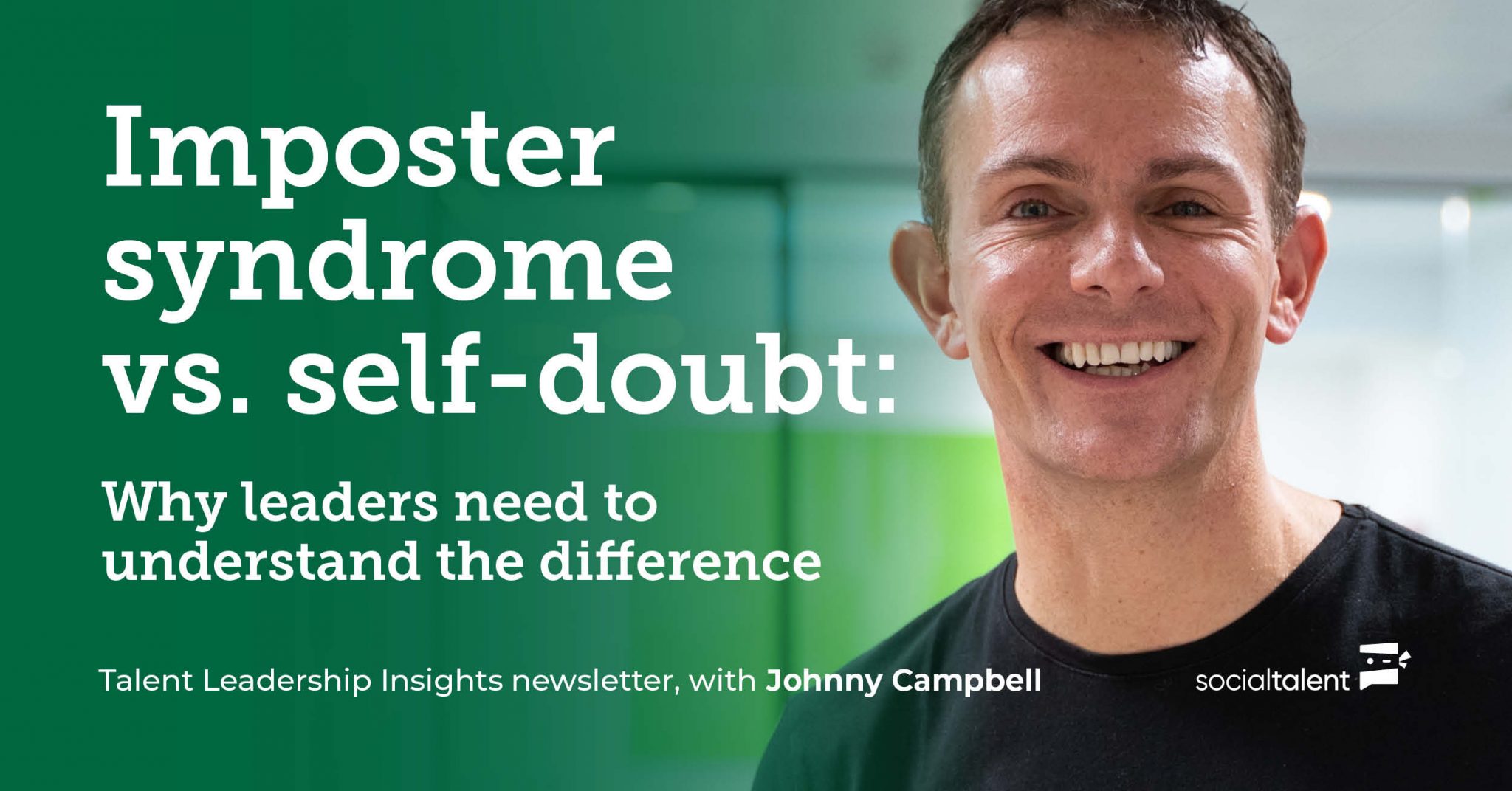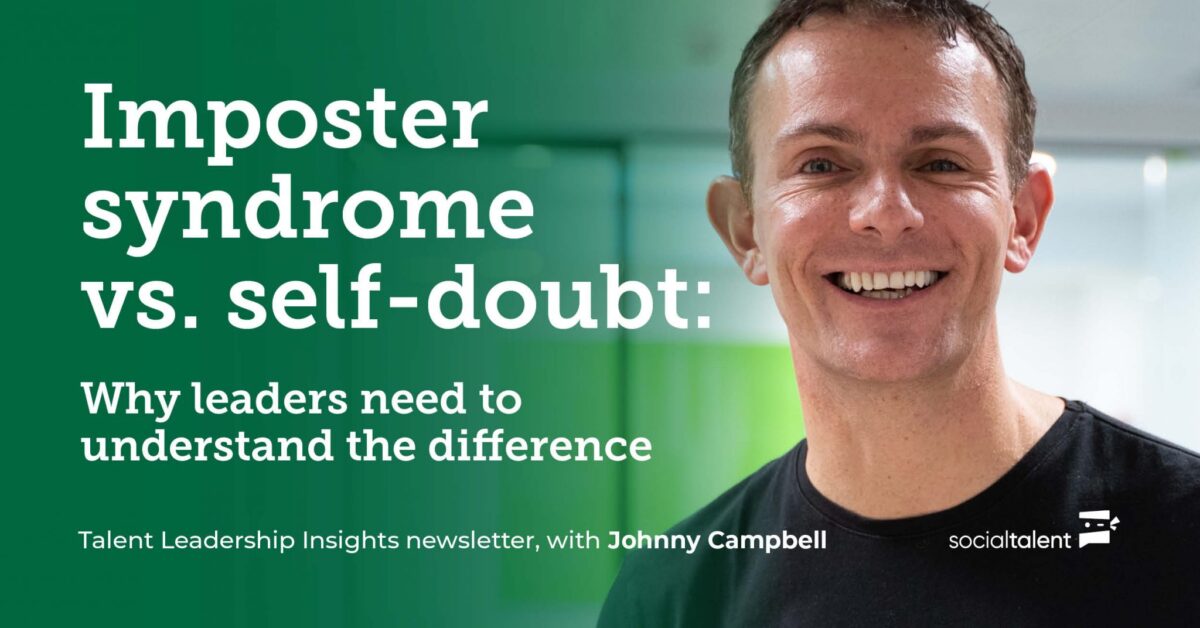
I have experienced self-doubt on occasions in my career. We all have. The first time I took to a presentation stage springs to mind – those feelings of trepidation and worry, diving headfirst into something new, not knowing how it would be received.
However, as I grew accustomed to addressing large audiences, those negative emotions naturally diminished. I don’t doubt my ability now – I know the ropes and can confidently say that public speaking is a skill firmly in my wheelhouse. Experience, repetition, and time helped me surmount those initial feelings.
But what happens when those feelings don’t go away? When they linger, and even a lifetime of evidence to the contrary can’t remedy the paralyzing fear that you’re not going to succeed, or you’re going to be found out as a fraud. This is imposter syndrome.
Why is it important to understand the difference?
After speaking with Aimee Bateman, the Founder of Careercake, on The Shortlist, I realized how easy (and dangerous) it is to conflate these two feelings. While similar in how they manifest, the approach to tackling each is markedly different.
Personally, I don’t think I’ve ever experienced imposter syndrome. Self-doubt has come knocking at my door as I mentioned, but I’ve always known I’d be able to overcome it. I’ve never felt that pervasive, all-encompassing worry that just doesn’t dissipate. The way Aimee put it, if you have imposter syndrome, even when you know what you’re doing, you still question yourself. It’s deeper and more complex.
As a leader within a company, it’s imperative to understand the difference if you want to support, boost, and enable your employees. If you brush imposter syndrome off as a moment of self-doubt, you limit your ability to help.
SocialTalent offers dedicated Leadership Training to help managers of all levels get the most out of their teams. Click the link to learn more.
Imposter syndrome in the workplace
Imposter syndrome commonly presents itself in the workplace. It’s a perfect breeding ground given the high-pressure moments, the necessity to perform, and the dynamics of teamwork. In fact, according to reports, as many as 70% of all people have felt imposter syndrome at some point.
And it’s important to say, it’s not a bad thing. Imposter syndrome is completely natural and is often even a signal of high achieving individuals. It’s not a reflection of ability. But left unchecked, it can get in the way of people reaching their full potential. As Aimee says:
“If you’re beating yourself up because you have imposter syndrome and you see it as a weakness and a failure, then it’s very difficult to get to a positive from a negative.”
Leaders are in a unique and fortuitous position to assist on this front, but only if they can spot it…
Understanding the behaviors of imposter syndrome
- Perfectionism – Individuals with imposter syndrome will often be inefficient with their time. The self-talk around not being good enough inhibits their ability to launch projects and ideas because they constantly feel nothing is up to scratch.
- Procrastination – Do some of your employees miss deadlines? Often this is also a sign of imposter syndrome. They can be so afraid of failing that it manifests in inaction. It’s not that they don’t care, it’s quite the opposite in fact.
- Overpreparation – This is the other end of the spectrum. So fearful of not being ready or not delivering, people will massively over prepare even for smaller events.
- Silence – Not speaking up is another indicator of imposter syndrome. Crippled by feelings of being too junior or not experienced enough, they sink into the background of conversations.
How can leaders support on this front?
Identifying imposter syndrome is the first step. The next is to have a conversation with the individual. Reassure them, show compassion, listen to their concerns, and explain why they have nothing to worry about. Ask how you can show up for them, to help ease these emotions.
While this won’t completely cure the deep-seated feelings, it’s important to establish this environment of psychological safety so you can get closer to the root cause and work on a strategy to manage it.
Left alone to fester, imposter syndrome can tangle up even the most gifted employees. It’s your job as a manager or leader to spot this, to ease the tendrils, and enable your people to thrive.
This article originally appeared in Johnny Campbell’s monthly LinkedIn Newsletter called Talent Leadership Insights. Subscribe here.
Discover more incredible content from Aimee Bateman in SocialTalent’s Internal Mobility training solution. Contact us today to get all the details.
The post Imposter syndrome vs. self-doubt: Why leaders need to understand the difference appeared first on SocialTalent.
